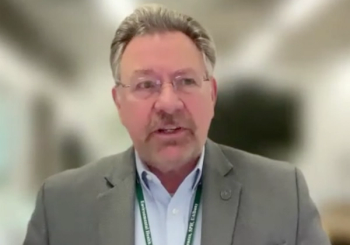
Exploring Recent Applications of Imaging Plasma Mass Spectrometry
One of the morning sessions at the Winter Conference on Plasma Spectrochemistry dove into single-cell analysis and imaging plasma mass spectrometry.
Monday morning was busy at the Winter Conference on Plasma Spectrochemistry. Following Bolea-Fernández’s talk titled, “Revealing the Invisible: Single-Event ICP-MS Analysis of Micro/Nano Structures,” the first oral session, which was called “Imaging Plasma Mass Spectrometry, Biodistribution Analysis, and Single Cell Analysis,” took place, featuring two talks.
The first of these two talks was delivered by Detlef Günther of ETH Zurich. His talk, titled “Extending the Analytical Capabilities for the Analysis of Biomedical Samples,” focused on the analytical capabilities in the biomedical industry, and how atomic spectroscopic techniques, such as inductively coupled plasma–time of flight–mass spectrometry (ICP-TOF-MS), is used to analyze single cells and nanoparticles (NPs).
Günther spent the beginning of his talk discussing the instrument setup for this type of analysis. There were two main components to the instrument setup that stood out. The ICP-MS setup he used for his research uses gravimetric forces, so it allows sample introduction from the top-down (1). and the setup uses a gas-exchange device for efficient desolvation. The purpose of this approach was to enhance the sample transport capabilities of ICP-MS, particularly for transporting droplets or particles, with the goal of analyzing individual cells (1). By using gravimetric forces, Günther explained in his talk, the transport of larger-sized droplets was made easier and more efficient compared to a horizontally oriented ICP-MS instrument (2). A nebulizer was also employed for the independent tuning of the system.
Günther also spent part of his talk discussing limitations in imaging. In particular, Günther spent some time discussing internal standards, and how gas-phase formation during laser ablation (LA) could restrict what can be used as an internal standard depending on the application. For example, a common internal standard used in elemental analysis is carbon. However, gas-phase formation during LA reduces when carbon can be effectively used as the internal standard (2).
There was another interesting tidbit that was also mentioned in Günther’s talk, even if it wasn’t the primary focus of his talk. This fun fact came during the part of his talk when he briefly discussed imaging contributions in cancer research. Although the field of oncology is growing and attracts significant interest in the scientific community, LA-ICP-MS has not been utilized to a great extent in this field. Günther showed a bar graph during his presentation and explained that LA-ICP-MS is most commonly seen in geological applications, being used for elemental analysis of different types of rocks and minerals (2).
As a result, Günther’s talk introduces that downward-pointing plasma applications opens the door for cytometry ICP-MS, which will help propel the field forward and lead to important biomedical breakthroughs.
References
- Vonderach, T.; Hattendorf, B.; Günther, D. Anal Chem. 2021, 93, 1001–1008. DOI:
10.1021/acs.analchem.0c03831 - Günther, D. Extending the Analytical Capabilities for the Analysis of Biomedical Samples. Presented at the Winter Conference on Plasma Spectrochemistry 2024, Tucson, Arizona, January 15th, 2024.
Newsletter
Get essential updates on the latest spectroscopy technologies, regulatory standards, and best practices—subscribe today to Spectroscopy.



